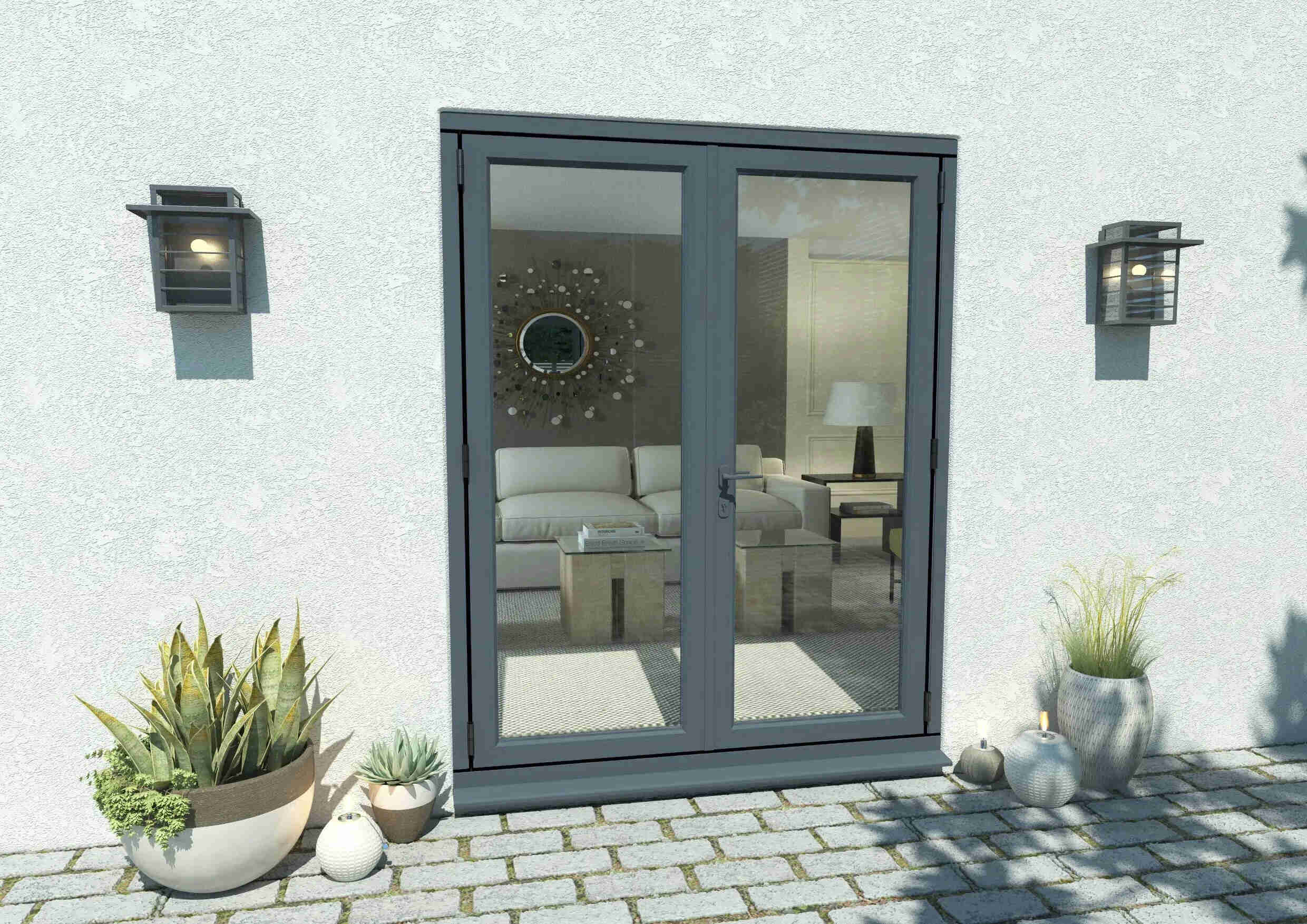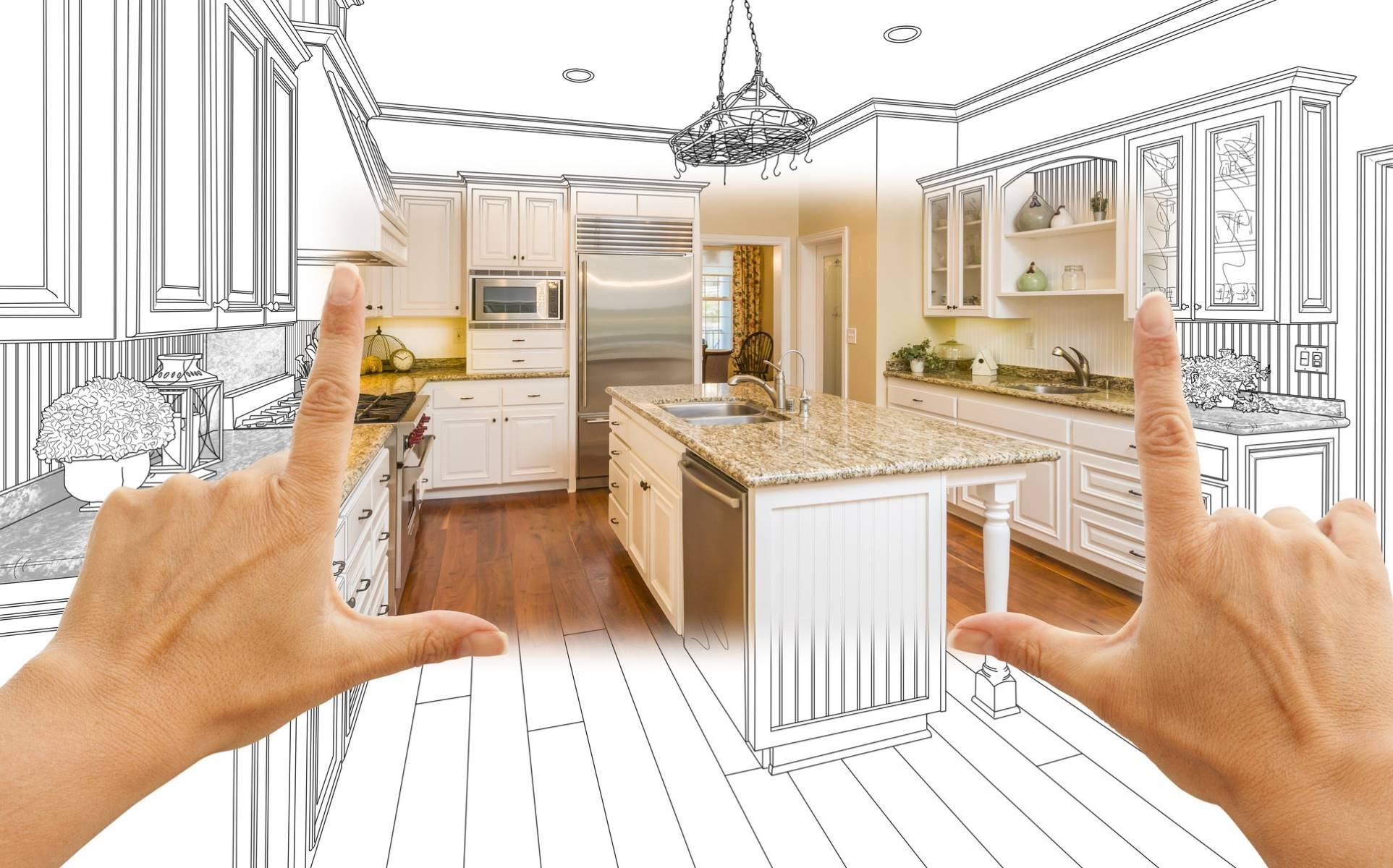Home>Furniture>Outdoor Furniture>What Is The Difference Between Porch And Patio


Outdoor Furniture
What Is The Difference Between Porch And Patio
Modified: October 21, 2024
Discover the key distinctions between a porch and a patio. Explore the ideal outdoor furniture for both spaces to create your perfect outdoor oasis.
(Many of the links in this article redirect to a specific reviewed product. Your purchase of these products through affiliate links helps to generate commission for Storables.com, at no extra cost. Learn more)
Introduction
Welcome to the world of outdoor living spaces! When it comes to designing and enjoying your outdoor area, there are two popular options: porches and patios. These versatile spaces can serve as extensions of your home, providing a cozy and inviting place to relax, entertain, and enjoy the beauty of the outdoors.
In this article, we will delve into the difference between porches and patios, exploring their definitions, functionality, design, materials, pros and cons, and maintenance. By the end, you’ll have a comprehensive understanding of these outdoor spaces, helping you make an informed decision for your own home.
So, let’s dive in and uncover the unique characteristics of porches and patios!
Key Takeaways:
- Porches provide a covered and cozy outdoor space, perfect for relaxing and entertaining while staying protected from the weather. They enhance curb appeal and offer a seamless connection to nature.
- Patios offer an open-air, versatile area for dining, entertaining, and relaxation. They can be customized with various materials and designs, providing a flexible and inviting outdoor living space.
Definition of Porch
A porch is an architectural feature attached to the entrance of a building, typically at the front or side. It serves as a transitional space between the indoors and outdoors, providing a covered and sheltered area. Porches are usually characterized by a roof structure that offers protection from the elements, such as rain and sun.
Porches can vary in size and design, ranging from small entryway porches to spacious wrap-around porches that encircle a significant portion of the building. They can be open-air or enclosed with screens or windows, offering a versatile space that can be enjoyed throughout the year.
Traditionally, porches have been a popular feature in residential architecture, adding charm and functionality to homes. They serve as a welcoming area for guests, a place for relaxation, and a spot to enjoy the surrounding views.
Overall, porches provide a seamless transition between the indoors and outdoors, allowing homeowners to enjoy the benefits of being outside while still enjoying the comforts and protection of being inside. Whether you’re sipping your morning coffee, watching the sunset, or simply soaking in the fresh air, a porch offers the perfect spot to connect with nature from the comfort of your home.
Definition of Patio
A patio is an outdoor space that is typically located at ground level, adjacent to a building. It is commonly constructed with durable materials such as concrete, stone, brick, or pavers. Unlike a porch, which is covered and attached to the building, a patio is an open-air area that is directly exposed to the elements.
Patios are designed to create an inviting and functional space for outdoor activities, such as dining, entertaining, or simply relaxing. They can be attached to the back or side of a house, or they can be freestanding in a garden or yard. Patios can also feature various amenities, including outdoor furniture, fire pits, grills, and even outdoor kitchens, to enhance the overall functionality and enjoyment of the space.
The design of a patio can vary greatly, depending on personal preferences and architectural style. Some patios are simple and minimalistic, while others are elaborate and incorporate decorative elements, such as pergolas, water features, or landscaping elements. Patios can be customized to reflect your individual taste and create a unique outdoor oasis that complements your home.
One of the defining characteristics of a patio is its versatility. Since it is typically an open space, it can be easily transformed and adapted to suit different purposes and activities. Whether you’re hosting a barbecue, hosting a gathering, or simply unwinding with a book, a patio offers a flexible and functional space that allows you to make the most of your outdoor living area.
Overall, a patio provides an extension of your indoor living space, allowing you to enjoy the beauty of the outdoors in a comfortable and inviting setting. It offers a place to soak up the sun, entertain friends and family, or simply unwind and relax after a long day.
Functionality and Purpose of Porches
Porches serve multiple functions and have a variety of purposes, making them a valuable addition to any home. Let’s explore some of the key functionalities and purposes of porches:
- Entryway: One of the primary purposes of a porch is to serve as an entryway to the house. It provides a covered space for guests to wait before entering the home, protecting them from the weather, whether it’s rain, sun, or snow.
- Outdoor Living Space: Porches offer an outdoor sanctuary where you can relax, unwind, and enjoy the beauty of the surrounding environment. Whether it’s reading a book, sipping a cup of coffee, or simply enjoying the fresh air, a porch provides a comfortable and sheltered space to do so.
- Entertaining: Porches are ideal for hosting gatherings and entertaining friends and family. They provide ample space for socializing, setting up outdoor furniture, and creating a welcoming ambiance for guests.
- Curb Appeal: A well-designed and maintained porch can significantly enhance the curb appeal of a home. It adds character, charm, and visual interest to the front facade, creating an inviting first impression.
- Connection with Nature: Porches offer the opportunity to feel immersed in nature while still being protected from the elements. Whether it’s enjoying the view of a garden, listening to the sounds of birds chirping, or feeling the gentle breeze, a porch provides a connection to the outdoors.
Porches truly bridge the gap between indoor and outdoor living, providing a functional and versatile space that can be enjoyed in various ways. Whether it’s a small front porch where you can greet neighbors, a screened-in porch where you can enjoy bug-free evenings, or a large wrap-around porch where you can lounge and watch the sunset, these spaces offer a unique and valuable addition to your home.
Functionality and Purpose of Patios
Patios are incredibly versatile outdoor spaces that provide a multitude of functionalities and serve a range of purposes. Let’s explore some of the key functionalities and purposes of patios:
- Outdoor Dining: Patios are perfect for enjoying outdoor meals with family and friends. They provide a designated space for setting up a dining table and chairs, allowing you to savor your meals al fresco.
- Entertaining: A patio is an excellent space for hosting social gatherings and parties. It offers ample room for arranging comfortable seating areas, setting up a barbecue grill, or even creating an outdoor bar. Your patio can become the hub of your outdoor entertaining activities.
- Relaxation and Recreation: Patios are great for creating a soothing and peaceful retreat. Whether you want to lounge on a comfortable outdoor sofa, practice yoga, or read a book in the sun, a patio provides a space where you can unwind and rejuvenate.
- Outdoor Living Room: Patios can be designed as an extension of your indoor living space. With the right furniture, decor, and lighting, you can create an inviting outdoor living room where you can gather with family and friends for conversations and relaxation.
- Connecting with Nature: Patios can serve as a bridge between your indoor and outdoor environments. They allow you to immerse yourself in the beauty of nature, whether it’s enjoying a colorful garden, listening to the chirping of birds, or watching the stars at night.
One of the great advantages of a patio is its adaptability. You can customize the design and amenities of your patio to suit your specific needs and preferences. Whether you want a cozy and intimate space for quiet evenings, a vibrant and lively area for entertaining, or a multi-functional space for various activities, your patio can accommodate your desires.
A patio is a place where you can create lasting memories, whether it’s hosting a summer BBQ, having a family dinner under the stars, or simply enjoying a quiet moment of solitude. It provides the opportunity to fully embrace outdoor living and make the most of your outdoor space.
Design and Construction of Porches
The design and construction of a porch are vital in creating a functional and aesthetically pleasing outdoor space. Let’s explore the key factors involved in the design and construction process of porches:
- Size and Shape: The size and shape of a porch depend on various factors, including the available space, architectural style of the home, and intended use. Porches can range from small entryway porches to expansive wrap-around designs that encircle the entire building.
- Roofing: The choice of roofing material will impact the overall look and functionality of the porch. Common options include shingles, metal, or even thatched roofs for a more rustic appearance. The roof should provide sufficient protection from the elements while complementing the architectural style of the home.
- Flooring: Porch flooring should be durable, weather-resistant, and visually appealing. Popular choices include wood, composite decking, stone, or concrete. The selection will depend on personal preferences, budget, and the desired aesthetic of the porch.
- Railings and Balustrades: Railings and balustrades not only provide safety but also add character and visual appeal to the porch. They can be made from a variety of materials such as wood, metal, or even glass, and can be designed in different styles, from traditional to contemporary.
- Screens and Windows: Depending on the desired functionality, porches can be open-air or enclosed with screens or windows. Screens help keep out insects and provide a sense of privacy, while windows allow for better temperature control and protection from the elements.
- Architectural Details: Architectural details, such as columns, moldings, and decorative elements, can enhance the overall design of a porch. These details should complement the architectural style of the home and create a cohesive and visually pleasing aesthetic.
When it comes to the construction of a porch, it is essential to consult with professionals, such as architects or contractors, who specialize in outdoor construction. They can provide guidance on local building codes, obtain necessary permits, and ensure that the construction is structurally sound and meets safety standards. Hiring experienced professionals will ensure that your porch is built to last and withstand the elements for years to come.
By carefully considering the design elements and construction details, you can create a porch that seamlessly blends with your home’s architecture, reflects your personal style, and provides a functional and inviting space to enjoy the outdoors.
Design and Construction of Patios
The design and construction of a patio play a crucial role in creating an appealing and functional outdoor space. Here are some key factors to consider during the design and construction process:
- Layout and Shape: The layout and shape of a patio depend on the available space, intended use, and personal preferences. Common shapes include rectangular, square, circular, or freeform designs. The layout should consider factors such as traffic flow, furniture placement, and integration with existing landscape features.
- Material Selection: The choice of patio materials impacts both the aesthetics and durability of the space. Popular options include concrete, stone, brick, tile, or pavers. Each material has its own unique characteristics, such as color, texture, durability, and maintenance requirements. Consider factors such as your climate, budget, and desired look when selecting patio materials.
- Drainage: Proper drainage is essential to prevent water accumulation and potential damage to the patio. Incorporating a slope in the design ensures that water drains away from the patio. Additionally, using permeable materials or adding drainage systems can help manage water runoff and prevent pooling.
- Outdoor Structures: Patios provide an opportunity to incorporate outdoor structures that enhance functionality and aesthetics. Consider features like pergolas, gazebos, or shade sails to provide shade and create a focal point. These structures can also support the integration of lighting, fans, or other outdoor amenities.
- Furniture and Accessories: Furniture selection and placement are important aspects of patio design. Consider the intended use of the space – whether it’s dining, lounging, or entertaining – and choose furniture that is comfortable, durable, and suits your style. Umbrellas, cushions, lighting, and outdoor rugs are accessories that can add comfort and personality to your patio.
- Landscaping: The design of a patio can be enhanced by incorporating landscaping elements. Consider surrounding the patio with plantings, flower beds, or container gardens to add color, texture, and privacy. Select plants that thrive in your climate and complement the overall design aesthetic.
When it comes to construction, it is essential to engage professionals, such as landscapers or hardscape contractors, who have experience in patio construction. They can ensure proper site preparation, accurate leveling, and the correct installation of materials. Professional contractors will also consider factors such as local building codes and climate conditions to prevent issues such as erosion, shifting, or cracking over time.
Careful consideration of the design elements and collaboration with professionals will help create a patio that complements your home’s architecture, suits your lifestyle, and provides an inviting and functional outdoor space for relaxation, entertainment, and enjoyment.
Material Options for Porches
When it comes to selecting the materials for your porch, there are several options available, each with its own unique characteristics in terms of aesthetics, durability, and maintenance. Here are some popular material choices for porch construction:
- Wood: Wood is a classic and versatile option for porch construction. Different types of wood, such as cedar, redwood, or pressure-treated lumber, offer varying degrees of resistance to rot, insects, and weathering. Wood can be painted or stained to match your home’s aesthetic and provides a warm and natural look to your porch.
- Composite: Composite materials, such as composite decking boards, are a popular alternative to traditional wood. They are made from a combination of wood fibers and recycled plastic, offering the appearance of wood with enhanced durability and low maintenance. Composite materials are resistant to rot, splintering, and insect damage, making them an attractive option for porch owners.
- Stone: Natural stone, such as flagstone or granite, adds a timeless and elegant look to your porch. It is durable, low-maintenance, and can withstand harsh weather conditions. Stone can be installed in various patterns, such as random or herringbone, to create unique and visually appealing designs.
- Concrete: Concrete is a versatile and cost-effective material that can be used for porch flooring. It can be stamped, stained, or textured to resemble various materials, such as stone or brick. Concrete is durable, long-lasting, and can be customized in terms of color and texture to suit your design preferences.
- Tile: Porcelain or ceramic tiles offer a wide range of design options for porch flooring. They are durable, easy to clean, and come in various colors, patterns, and textures. Tiles can add a touch of elegance and sophistication to your porch, creating a visually stunning space.
When choosing the material for your porch, consider factors such as your climate, maintenance requirements, budget, and personal style. It’s important to select a material that can withstand your local weather conditions and will require minimal upkeep over time.
Additionally, working with a professional contractor or architect can help guide you in selecting the right materials for your specific needs. They can provide insights based on local building codes, climate considerations, and the overall design aesthetic you wish to achieve.
Remember, the material you choose for your porch will not only impact its durability and maintenance requirements but also contribute to the overall look and feel of your outdoor space. So, take your time, explore different material options, and choose the one that best suits your preferences and fits seamlessly with the style of your home.
Material Options for Patios
When it comes to selecting materials for your patio, there are a variety of options available, each with its own unique benefits and characteristics. Here are some popular material options for patio construction:
- Concrete: Concrete is a versatile and durable material widely used for patio construction. It can be poured and formed into any shape, allowing for creative design possibilities. Concrete patios are low-maintenance, resistant to weathering, and can be customized with various finishes, such as stamped, stained, or etched patterns.
- Pavers: Pavers are precast concrete or stone units that can be interlocked and laid in different patterns to create a visually appealing patio surface. They come in various shapes, sizes, and colors, allowing for endless design possibilities. Pavers are durable, easy to install, and can be replaced individually if necessary.
- Natural Stone: Natural stone, such as flagstone, limestone, or slate, offers an elegant and timeless look for patios. Each stone type has its own unique texture, color variations, and natural beauty. Natural stone patios are durable, heat-resistant, and can withstand various weather conditions. They provide a luxurious and organic aesthetic to your outdoor space.
- Brick: Brick patios are a classic choice that adds charm and character to outdoor areas. Bricks are durable, long-lasting, and available in a range of colors and sizes. They can be laid in different patterns, such as herringbone or basketweave, to create visual interest. Brick patios require minimal maintenance and can be easily repaired if necessary.
- Tile: Tiles, such as porcelain or ceramic, provide a wide range of design options for patios. They are available in various colors, patterns, and textures, allowing you to create a customized look. Tiles are durable, easy to clean, and can withstand different climates. They can also be installed in a variety of ways, including traditional grid patterns or intricate mosaic designs.
When selecting a material for your patio, consider factors such as your climate, maintenance requirements, budget, and desired aesthetic. Additionally, it’s important to choose a material that complements the overall style of your home and suits your personal preferences.
Working with a professional contractor or landscape designer can greatly assist you in choosing the right materials for your patio. They can provide guidance based on your specific needs and preferences, as well as ensure proper installation techniques and compliance with local building codes.
Remember, the material you choose for your patio will impact not only its durability and maintenance but also its visual appeal and overall ambiance. So, take the time to explore different material options, consider their pros and cons, and select the one that best suits your style and enhances your outdoor living space.
Pros and Cons of Porches
Porches offer numerous advantages and can greatly enhance the functionality and aesthetics of your home. However, like any architectural feature, porches also have their drawbacks. Let’s explore the pros and cons of porches to help you make an informed decision:
Pros:
- Outdoor Living Space: Porches provide an additional outdoor living area where you can relax, entertain guests, or simply enjoy the beauty of nature. They offer a sheltered and comfortable space to spend time outdoors, regardless of the weather.
- Curb Appeal: A well-designed porch can greatly enhance the curb appeal of your home. It adds character, charm, and visual interest to the front facade, creating an inviting and welcoming entrance for guests.
- Protection from the Elements: Porches offer shelter from rain, snow, and harsh sunlight. This allows you to enjoy the outdoors while still being protected from the elements, making them ideal for year-round use.
- Increased Home Value: Adding a porch to your home can increase its value and make it more attractive to potential buyers. Porches are considered desirable features that add usable square footage and enhance the overall appeal of a property.
- Connection with Nature: Porches provide a seamless transition between the indoors and outdoors, allowing you to connect with nature. Whether it’s enjoying panoramic views, listening to the sounds of birds, or feeling the gentle breeze, porches offer a closer connection to the natural environment.
Cons:
- Cost Considerations: Building a porch can be a significant investment. Factors such as the size, materials, and design complexity can impact the overall cost. It’s important to carefully consider your budget and weigh the costs against the benefits.
- Maintenance: Depending on the materials used, porches may require ongoing maintenance to keep them in good condition. This can include regular cleaning, painting or staining, and repairs to address wear and tear or weather damage.
- Space Limitations: Porches occupy a portion of your outdoor space, which may limit other possibilities for landscaping or outdoor activities. It’s important to plan the layout of your property carefully to ensure the porch doesn’t overcrowd the available space.
- Privacy: While porches offer a pleasant and open outdoor space, they may lack privacy compared to other outdoor areas. Depending on the design and location of your porch, you might feel exposed to neighbors or passersby.
- Climate Restrictions: In areas with extreme climates, such as regions with severe winters or intense heat, porches may have limitations in terms of their use during certain seasons. Without additional heating or cooling options, porches might not be as comfortable in extreme weather conditions.
Ultimately, the decision to add a porch to your home depends on your lifestyle, budget, and specific needs. Consider the pros and cons discussed here, along with your personal preferences, to determine if a porch is the right addition for your home.
Pros and Cons of Patios
Patios offer a versatile and enjoyable outdoor space for relaxation, entertainment, and connection with nature. However, like any architectural feature, patios come with their own set of pros and cons. Let’s explore the advantages and disadvantages of having a patio:
Pros:
- Outdoor Living Space: Patios provide an additional area for outdoor living and can be tailored to suit different needs and preferences. Whether you want to dine al fresco, lounge with friends, or practice yoga under the open sky, a patio offers a versatile space for various activities.
- Entertaining and Hosting: Patios are ideal for hosting gatherings, parties, and barbecues. They provide a designated space for socializing and can be equipped with outdoor furniture, fire pits, and grills, transforming your patio into an inviting entertainment area.
- Low Maintenance: Depending on the materials chosen, patios can be relatively low maintenance. Materials like concrete, pavers, or natural stone are durable and require minimal upkeep. Regular cleaning and occasional sealing are typically all that is needed to keep your patio looking its best.
- Design Flexibility: Patios offer a wide range of design options. From the material selection to the layout and landscaping elements, you can customize your patio to reflect your personal style and complement your home’s architecture. With endless possibilities, you can create a unique and inviting outdoor space.
- Connection with Nature: Patios allow you to fully enjoy the beauty of the outdoors. Whether it’s basking in the sun, feeling a gentle breeze, or stargazing at night, a patio provides an immersive experience that allows you to connect with nature.
Cons:
- Weather Dependency: Patios are exposed to the elements, which means their use may be limited during extreme weather conditions. Without proper coverings or shade options, you may need to seek shelter indoors during heavy rain, snow, or intense heat.
- Higher Sun Exposure: Unlike covered porches, patios typically lack a roof, leaving you more exposed to the sun. This may require the use of umbrellas, awnings, or other shade solutions to protect yourself from excessive sun exposure and heat.
- Limited Privacy: Depending on your patio’s location and surroundings, privacy may be a concern. Open patios may lack the seclusion and privacy provided by enclosed spaces, and nearby neighbors or passersby may have a direct view of your outdoor activities.
- Cost Considerations: The cost of building or renovating a patio can vary based on factors such as size, materials, and design complexity. It’s important to consider your budget and the potential costs involved in creating your ideal patio space.
- Potential Maintenance: While patios generally require less maintenance than other outdoor features, they may still require periodic cleaning, fixing cracks or uneven surfaces, and addressing any wear and tear over time. Regular maintenance is important to ensure your patio remains in good condition and retains its visual appeal.
Considering the pros and cons outlined above, it’s important to evaluate your specific needs, budget, and preferences when deciding whether to have a patio. With careful planning and consideration, you can create a beautiful and functional outdoor space that enhances your lifestyle and enjoyment of your home.
Maintenance and Upkeep of Porches
Maintaining and regularly caring for your porch is essential to keep it looking its best and prolong its lifespan. By following proper maintenance practices, you can ensure that your porch remains safe, functional, and visually appealing. Let’s explore some key considerations for the maintenance and upkeep of porches:
Cleaning:
Regularly cleaning your porch helps remove dirt, debris, and stains, keeping it in good condition. The frequency of cleaning depends on your porch’s location and exposure to the elements. Here are some tips:
- Sweep the porch regularly to remove dirt and leaves.
- Use a mild soap solution or a porch cleaner to wash the surface, following the manufacturer’s instructions.
- Scrub the porch with a soft-bristle brush to remove stubborn stains.
- Rinse thoroughly using a garden hose or pressure washer, if appropriate for your porch’s construction material.
- Avoid using abrasive cleaners or tools that can damage the porch’s surface.
Sealing and Coating:
Depending on the material used for your porch, sealing or coating may be necessary to protect it from moisture, stains, and UV damage. Here are some considerations:
- Wooden porches should be sealed or stained regularly to prevent wood rot, insect infestations, and fading. Follow the manufacturer’s guidelines for the appropriate sealant and reapplication frequency.
- Composite materials, such as composite decking, may benefit from periodic cleaning and the application of a protective coating to maintain their appearance and durability.
- Stone and concrete porches may require periodic sealing to protect against staining and water absorption. Consult with professionals to determine the appropriate sealant for your specific material.
Inspecting for Damage:
Frequent inspections allow you to identify and address any damage or potential issues before they worsen. Here are some areas to pay attention to:
- Check for loose or damaged boards, balusters, or railings. Tighten or replace any loose or damaged hardware.
- Inspect the porch’s foundation or support structure for signs of settling or shifting. Address any structural issues promptly to prevent further damage or safety hazards.
- Examine the porch’s roof, if applicable, for missing or damaged shingles, leaks, or signs of water damage. These issues should be repaired promptly to prevent further deterioration.
Addressing Repairs:
If you notice any damage or issues during your inspections, it’s important to address them promptly to prevent further deterioration. Consider the following:
- Repair or replace any damaged or rotting wood components of your porch. This includes boards, railings, columns, or any other structural elements.
- Address any cracks or unevenness in stone, concrete, or other flooring materials to prevent tripping hazards and further damage. Consult with professionals for the best repair approach.
- Ensure proper drainage around the porch to prevent water pooling or erosion, as these can lead to structural damage over time. Install or repair gutters, downspouts, or drain systems as needed.
Regular maintenance and prompt repairs are key to ensuring the longevity and safety of your porch. By adopting a proactive approach, you can address small issues before they become major problems and enjoy your porch for years to come.
Maintenance and Upkeep of Patios
Regular maintenance and proper upkeep of your patio will not only ensure its longevity but also keep it looking attractive and functional. By following these maintenance practices, you can enjoy your patio for years to come:
Cleaning:
Regular cleaning is essential to remove dirt, debris, and stains from your patio’s surface. Here are some tips:
- Sweep or use a leaf blower to remove loose debris such as leaves, twigs, and dirt.
- Wash the patio surface using a mild detergent or a specially formulated patio cleaner. Follow the instructions provided by the manufacturer.
- Scrub stubborn stains or moss with a soft brush or a pressure washer, if appropriate for your patio’s material. Be cautious not to damage the surface.
- Rinse the patio thoroughly with water, ensuring that no cleaning solution residue remains.
Sealing and Resealing:
To protect and preserve your patio’s surface, it may require periodic sealing or resealing. Here’s what to consider:
- Stone, concrete, or paver patios may benefit from sealing to enhance durability, protect against stains, and prevent water absorption. Consult with professionals to determine the appropriate sealant and recommended resealing frequency.
- Follow the instructions provided by the manufacturer when applying sealant, ensuring that the surface is clean and dry prior to application.
- Reapply sealant as needed, typically every few years, to maintain optimal protection and appearance.
Inspecting for Damage:
Regular inspections allow you to identify any signs of damage or potential issues early on. Here’s what to look for:
- Check for cracks, chips, or unevenness on the patio surface. Address any damage promptly to prevent further deterioration and potential tripping hazards.
- Inspect the patio’s edging, borders, or retaining walls for signs of shifting or damage. Ensure that they remain secure and in good condition.
- Examine any built-in features, such as fire pits or outdoor kitchens, for structural integrity and functionality. Repair or maintain these features as needed.
Addressing Repairs:
If you notice any damage or issues during your inspections, addressing them promptly is crucial to prevent further damage. Consider the following:
- Repair or replace any damaged or loose pavers, bricks, or tiles. Ensure they are properly set and stable.
- Fill in any cracks or gaps in the patio’s surface to prevent water penetration and further deterioration.
- Address any drainage issues by unclogging or repairing gutters, downspouts, or other drainage systems to prevent water pooling on or near the patio.
Regular maintenance and timely repairs are essential in preserving the beauty and functionality of your patio. By adopting these practices, you can enjoy a well-maintained outdoor space that will provide years of relaxation, entertainment, and enjoyment.
A porch is a covered area at the front of a house, while a patio is an open outdoor space usually at the back. Porches often have a roof and are attached to the house, while patios are usually on the ground and can be detached.
Conclusion
Porches and patios are both wonderful additions to any home, providing outdoor spaces where you can relax, entertain, and connect with nature. Each option offers its own unique benefits and considerations. Porches offer a covered and protected area, perfect for enjoying the outdoors while remaining shielded from the elements. On the other hand, patios provide an open-air space, allowing for greater flexibility in design and use.
When it comes to design and construction, porches can be customized to match the architectural style of your home, while patios offer a wide variety of material options for creating a personalized outdoor oasis. Porches and patios also differ in terms of maintenance and upkeep, with each requiring regular cleaning, sealing, and inspections to keep them in optimal condition.
Ultimately, the choice between a porch and a patio depends on your personal preferences, budget, and the specific needs of your outdoor space. Consider factors such as the desired functionality, climate, available space, and design aesthetic when making your decision.
Whichever option you choose, both porches and patios provide valuable extensions of your indoor living space, allowing you to enjoy the beauty of the outdoors in a comfortable and inviting setting. Whether it’s sipping your morning coffee on a porch swing or hosting a backyard barbeque on a patio, these outdoor spaces can become your own personal sanctuary.
Remember, enlisting the help of professionals can greatly assist you in the design, construction, and maintenance of your porch or patio. They can provide expert advice, ensure proper installation, and help you create a cohesive and enjoyable outdoor living area.
So go ahead, envision your ideal outdoor space, and bring it to life with a porch or patio that suits your lifestyle and enhances your overall home experience. Enjoy the fresh air, soak up the sunshine, and create lasting memories in your very own outdoor haven.
Frequently Asked Questions about What Is The Difference Between Porch And Patio
Was this page helpful?
At Storables.com, we guarantee accurate and reliable information. Our content, validated by Expert Board Contributors, is crafted following stringent Editorial Policies. We're committed to providing you with well-researched, expert-backed insights for all your informational needs.










0 thoughts on “What Is The Difference Between Porch And Patio”